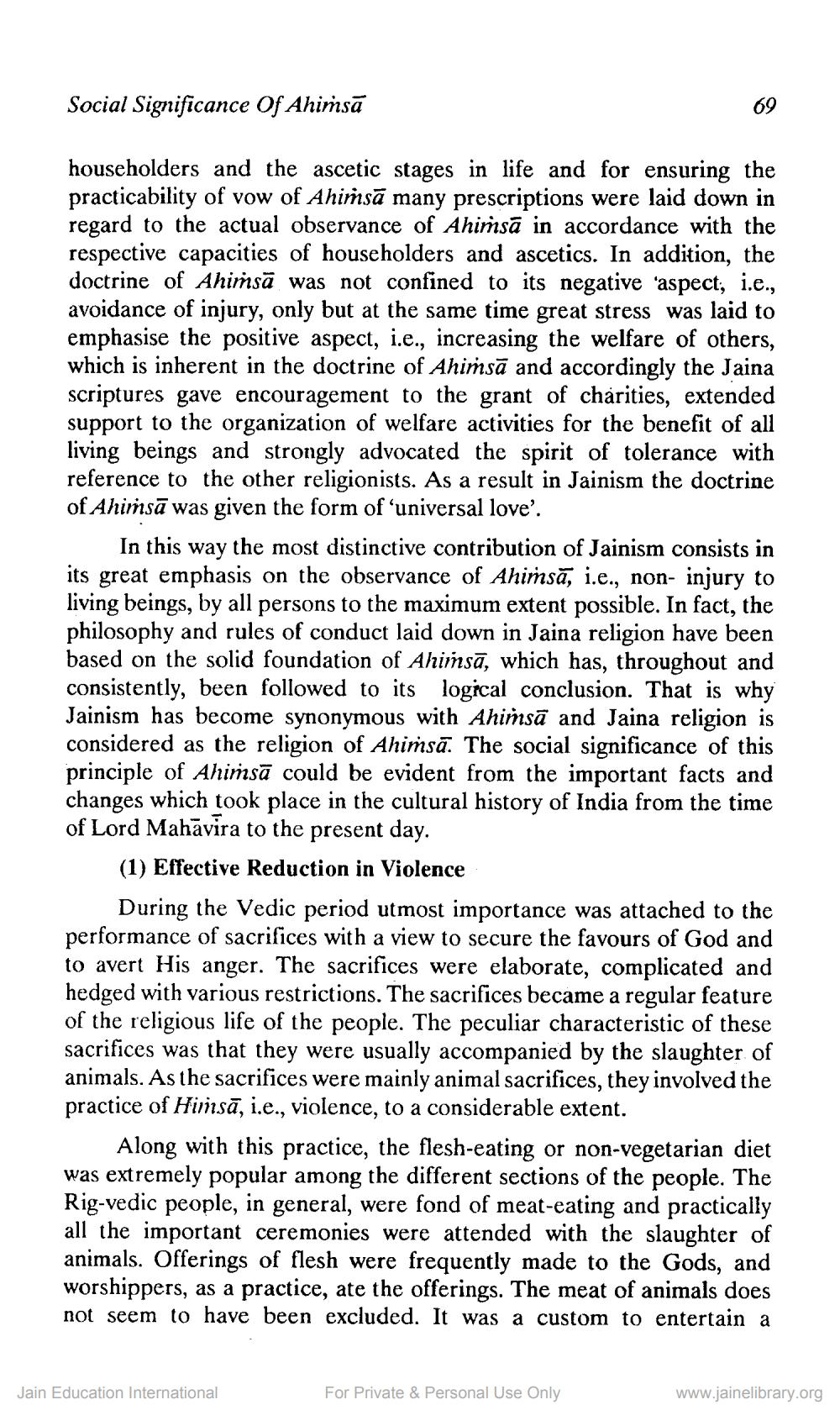________________
Social Significance Of Ahimsa
householders and the ascetic stages in life and for ensuring the practicability of vow of Ahiṁsā many prescriptions were laid down in regard to the actual observance of Ahimsa in accordance with the respective capacities of householders and ascetics. In addition, the doctrine of Ahimsa was not confined to its negative aspect, i.e., avoidance of injury, only but at the same time great stress was laid to emphasise the positive aspect, i.e., increasing the welfare of others, which is inherent in the doctrine of Ahimsa and accordingly the Jaina scriptures gave encouragement to the grant of charities, extended support to the organization of welfare activities for the benefit of all living beings and strongly advocated the spirit of tolerance with reference to the other religionists. As a result in Jainism the doctrine of Ahimsa was given the form of 'universal love'.
In this way the most distinctive contribution of Jainism consists in its great emphasis on the observance of Ahimsă, i.e., non- injury to living beings, by all persons to the maximum extent possible. In fact, the philosophy and rules of conduct laid down in Jaina religion have been based on the solid foundation of Ahimsa, which has, throughout and consistently, been followed to its logical conclusion. That is why Jainism has become synonymous with Ahimsa and Jaina religion is considered as the religion of Ahimsa. The social significance of this principle of Ahimsa could be evident from the important facts and changes which took place in the cultural history of India from the time of Lord Mahavira to the present day.
(1) Effective Reduction in Violence
69
During the Vedic period utmost importance was attached to the performance of sacrifices with a view to secure the favours of God and to avert His anger. The sacrifices were elaborate, complicated and hedged with various restrictions. The sacrifices became a regular feature of the religious life of the people. The peculiar characteristic of these sacrifices was that they were usually accompanied by the slaughter of animals. As the sacrifices were mainly animal sacrifices, they involved the practice of Himsā, i.e., violence, to a considerable extent.
Along with this practice, the flesh-eating or non-vegetarian diet was extremely popular among the different sections of the people. The Rig-vedic people, in general, were fond of meat-eating and practically all the important ceremonies were attended with the slaughter of animals. Offerings of flesh were frequently made to the Gods, and worshippers, as a practice, ate the offerings. The meat of animals does not seem to have been excluded. It was a custom to entertain a
Jain Education International
For Private & Personal Use Only
www.jainelibrary.org




